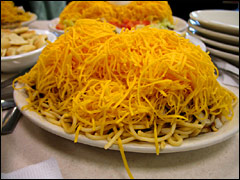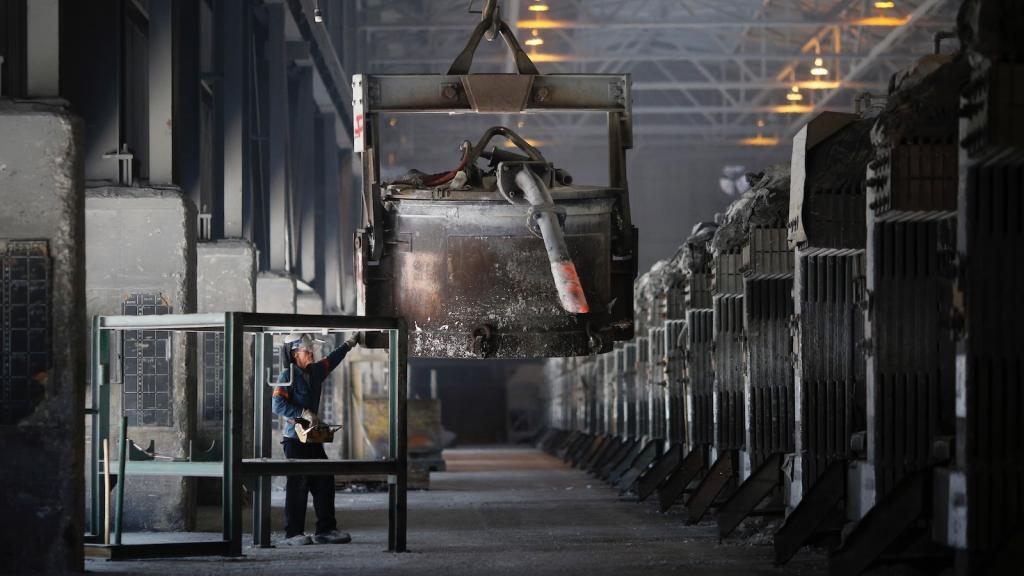Every time I go to the supermarket lately, I get sticker shock. Why is it suddenly costing an arm and a leg to keep body and soul together?
Part of the explanation lies in recent developments at the gas station. Skyrocketing fuel prices translate to higher costs for growing and transporting food — and higher retail prices for us. Then there’s the biofuel boom: As more and more grain gets diverted for use as car fuel, less is available as food, for both humans and livestock. That scarcity drives prices up. As a result, there’s less and less grain being stored away for a rainy day all over the world.
According to my friend the food anthropologist Ellen Messer, shrinking global grain stores pose a real threat to people in developing nations. Rather than mere sticker shock, hundreds of millions of people across the globe face the shock of not having enough to eat.
As the result of that concern, I’ve been seeking ways to avoid using more than my share. For one, I eat less and less meat, since it takes many pounds of grain to produce a pound of meat. I figure it’s better just to eat the grain myself. Of course, that method is easier on my budget, too.
Many of my friends are also downshifting their protein consumption from animal to vegetable for economic as well as environmental reasons. With them in mind, I wanted to make a good bean-and-grain dish, but I wasn’t in the mood for anything hippy-dippy (which was weird, because usually I love anything that smacks of microbuses, peace signs, and patchouli …). When I put my mind to the task of cooking up a “civilian” type bean-and-grain dish, I settled on “Cincinnati chili.”

We’ll have ours three-way.
Photo: noteatingoutinny.com
Learning of the existence of Cincinnati chili was a huge disappointment to me — not because I didn’t want to eat it, but because I thought I had invented it! I was describing my latest concoction to a friend a few years ago: “I made this cinnamon-laced sauce that had a middle-eastern kind of flavor and I served it over spaghetti,” I reported excitedly. But he cut me off: “Congratulations! You’ve invented Cincinnati chili!” (I have also had similar experiences re-inventing kugel, a chicken and bananas recipe, white gazpacho, and several other dishes, as well as a dance that strongly resembles the Macarena. Great minds think alike, right? Right?)
Have It Your Way
As delicious as my own invention was, I could not have conceived of the greatness that is the Cincinnati chili toppings system, which is very specific. It goes like this:
When the chili is simply served on spaghetti, it’s called two-way Cincinnati chili. If you want it with cheese, you have to ask for a three-way. (Seriously.) With onions, it’s a four-way. Topped with kidney beans, it’s a five-way.
The original Cincinnati chili was developed by the owners of a Greek diner in, well, Cincinnati. It doesn’t contain any beans and relies entirely on beef for its protein. (As I understand it, the ground beef is boiled in broth rather than browned.) It sometimes also contains unsweetened chocolate, which makes it a little bit like a Mexican mole sauce. Recipes differ on the use of onions — some include only a bit of fresh chopped onions as a garnish, while other recipes call for sautéeing an onion as the base for the sauce.
For this version, I chose the latter approach, while skipping the beef and chocolate. For protein I added beans — kidney beans for their flavor and smoothness and chick peas, which are a bit sturdier, to vary the texture of the chili a bit. I used dried apricots for a tangy flavor and a touch of honey for sweetness.
I served it over Barilla Whole Grain (51 percent whole wheat) thin spaghetti and was very pleased with the texture and flavor of the pasta. Whole wheat pasta has come a long, long way since I first tried using it about 20 years ago. I encourage you to try it.
I bought everything I needed for this dish at the regular old supermarket. No expensive specialty ingredients here! This dish is even better served the day after it’s made — so why not make the sauce, refrigerate it for a day, and then serve it on the pasta? Even if you store leftovers (i.e., the pasta and sauce all mixed together) it’s really good the next day. The whole wheat pasta maintains its “bite” (resistance to the tooth) a bit and it absorbs all the great flavors, which makes it a good lunch to take to the office.
This dish is good enough to make you temporarily forget that you are on the road to ruin financially and that the world is going to hell in a handbasket. Happy dining!
Easy-on-the-Wallet Cincinnati Chili
I wanted to call it Cinn-Cin Chili (because it contains cinnamon and hails from Cincinnati) but I decided that would be silly. Then I thought of “Not Exactly Original Cinn Chili” — get it, original Cinn? Well, my editor didn’t, so I decided to give the punning a rest. If you are a chickpea hater, you can substitute a second can of kidney beans for the can of chickpeas. Don’t tell your non-hippy friends, but this dish is vegan. (For a non-vegan version, try a three-way. Um, you know what I mean.)
Start the water for your spaghetti when you begin to make the sauce. This sauce waits well if you finish the sauce before your pasta is ready. Drain the pasta (don’t rinse it in cold water — that’s unnecessary) and stir it directly into the sauce in the pan if the pan is big enough. If there isn’t room, combine it in a big bowl and serve it family style.
This recipe makes enough for four very hungry people or six modestly hungry souls.
1 medium onion, chopped
3 tablespoons olive oil
1/2 teaspoon cinnamon
1/8 teaspoon cumin
1 28-oz. can of diced or puréed tomatoes
1 15-oz. can of kidney beans
1 15-oz. can of chick peas
6-8 dried apricots, cut into quarters
1-2 tablespoons honey
1/4 teaspoon salt
A squeeze of lemon or orange juice (optional) added 1/2 teaspoon at a time
Toppings
Chopped fresh onion
Grated cheese
- Peel and chop the onion.
- Pour the olive oil into a sautée pan and place it over medium heat. Add the onions, cinnamon, and cumin, and sautée everything until most of the pieces of onion are translucent.
- Add the diced tomatoes or tomato purée. Stir until the onions are well distributed. Cook for five minutes over medium heat. Stir occasionally.
- Add the beans and apricots. Cook until the beans and apricots are warmed through.
- Add the honey (start with one tablespoon and taste before adding more) and salt.
- Adjust seasoning. Add more honey or salt as needed.
- The canned tomatoes should make things plenty acidic, but if you want to give the dish a little bit more zing, add a squeeze of fresh lemon or orange juice. Start by adding a half teaspoon and then go up in half-teaspoon increments until the taste makes you blissful.
- Serve over spaghetti. Offer toppings to your guests.


